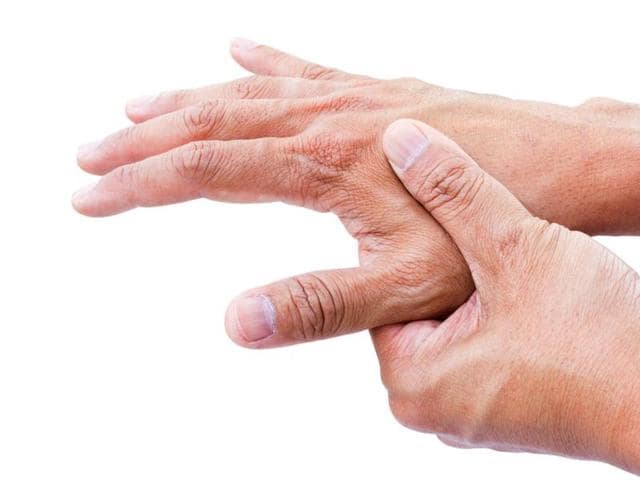The Different Types of Arthritis

Arthritis is a prevalent and often misunderstood condition that affects millions of people worldwide. It refers to a group of disorders characterized by inflammation in the joints, leading to pain, stiffness, and reduced mobility. There are more than 100 types of arthritis, each with its own unique characteristics, causes, and treatments. In this comprehensive guide, we will explore some of the most common types of arthritis, shedding light on their distinct features and helping you gain a better understanding of this complex condition.
Osteoarthritis
Osteoarthritis (OA) is the most common form of arthritis, often referred to as “wear-and-tear” arthritis. It occurs when the protective cartilage that cushions the ends of your bones gradually breaks down, leading to pain, swelling, and limited joint movement. OA typically affects weight-bearing joints such as the knees, hips, and spine, as well as the hands. It is more common in older individuals and can result from age, genetics, joint injuries, and obesity.
Rheumatoid Arthritis
Rheumatoid Arthritis (RA) is an autoimmune disease that causes the immune system to mistakenly attack the synovium—the lining of the membranes that surround the joints. This results in inflammation that can eventually lead to joint deformities and damage to other organs. RA commonly affects the hands, wrists, and knees, and it often presents symmetrically, meaning that if one joint is affected, the corresponding joint on the other side of the body is as well. It can strike at any age, and its exact cause remains unknown.
Psoriatic Arthritis
Psoriatic Arthritis (PsA) is a form of arthritis that develops in some individuals with the skin condition psoriasis. It can cause joint pain, stiffness, and swelling, often in combination with skin lesions. PsA can affect any joint in the body and may also involve the nails, causing pitting or discoloration. The severity of both the skin and joint symptoms can vary widely from person to person.
Ankylosing Spondylitis
Ankylosing Spondylitis (AS) is a type of arthritis that primarily affects the spine. It causes inflammation of the spinal joints, leading to pain and stiffness in the lower back and hips. Over time, the inflammation can cause the vertebrae to fuse together, resulting in a rigid spine. AS tends to develop in late adolescence or early adulthood and is more common in men than women.
Juvenile Idiopathic Arthritis
Juvenile Idiopathic Arthritis (JIA) is an umbrella term for several types of arthritis that affect children. It is characterized by joint inflammation lasting for at least six weeks in a child under the age of 16. JIA can cause joint pain, swelling, and stiffness, and it may also lead to eye inflammation. The exact cause of JIA is unknown, but it is believed to involve a combination of genetic and environmental factors.
Gout
Gout is a type of arthritis that results from the buildup of uric acid crystals in the joints. It often causes sudden and severe pain, swelling, redness, and warmth in the affected joint, commonly the big toe. Gout attacks can be triggered by factors such as diet, alcohol consumption, and obesity. Historically associated with indulgence in rich foods and excess, gout can affect anyone.

Systemic Lupus Erythematosus
Systemic Lupus Erythematosus (SLE), commonly known as lupus, is an autoimmune disease that can affect multiple organs, including the joints. Joint pain, stiffness, and swelling are common symptoms of lupus. The disease’s unpredictable nature means that symptoms can flare up and then subside. While the exact cause of lupus is not fully understood, genetics and environmental factors are believed to play a role.
Understanding and Managing Arthritis
While there is no cure for arthritis, there are various treatments and strategies available to manage its symptoms and improve quality of life. These can include:
- Medications: Depending on the type of arthritis, medications such as pain relievers, anti-inflammatory drugs, disease-modifying antirheumatic drugs (DMARDs), and biologics may be prescribed to alleviate pain and slow down joint damage.
- Physical Therapy: Exercise and physical therapy can help improve joint flexibility, strengthen muscles, and reduce pain. Low-impact activities like swimming and cycling can be particularly beneficial.
- Lifestyle Changes: Maintaining a healthy weight, following an anti-inflammatory diet, and managing stress can help alleviate arthritis symptoms. Avoiding smoking and limiting alcohol consumption are also recommended.
- Assistive Devices: For some individuals, using devices like braces, splints, or canes can provide support to joints and help with mobility.
- Surgery: In cases of severe joint damage, surgery such as joint replacement may be considered to improve joint function and reduce pain.
In conclusion, arthritis is a diverse group of conditions that can affect people of all ages. Understanding the various types of arthritis and their unique characteristics is crucial for accurate diagnosis and effective management. If you or someone you know is experiencing joint pain, stiffness, or swelling, consulting a healthcare professional is the first step toward getting the right treatment and regaining control of your life. Remember, while arthritis can be challenging, advances in medical science and a holistic approach to health can significantly improve the well-being of those affected by this condition. If you found this article useful, you may also visit The Conversation Prism to read more about the different types of arthritis.



